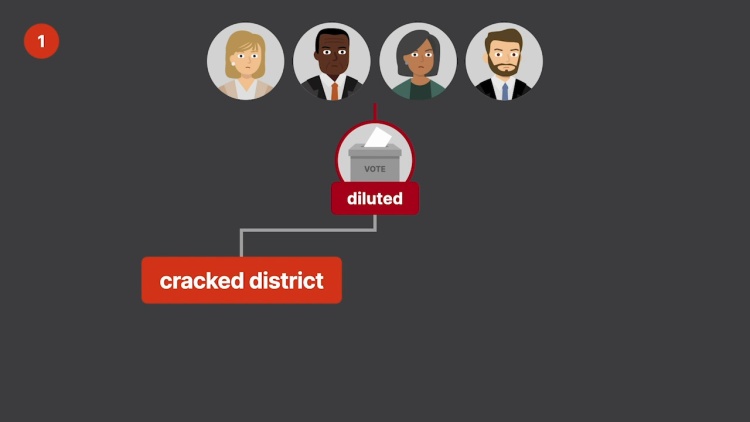Gill v. Whitford
United States Supreme Court
138 S. Ct. 1916 (2018)
- Written by Tanya Munson, JD
Facts
Wisconsin’s legislature consisted of a state assembly and a state senate. The 99 members of the assembly were chosen from single districts. State senators were also chosen from single-member districts, which were laid on top of the assembly districts so that three assembly districts formed one senate district. The Wisconsin Constitution gave the legislature the responsibility to apportion and redistrict the members of the senate and the assembly after each census. In 2011, a Republican legislature passed, and a Republican governor signed, the districting plan, Act 43. After Act 43 was passed, Republicans won majorities in the assembly in the 2012 and 2014 elections. In 2015, 12 Wisconsin voters (the voters) (plaintiffs) filed a complaint in district court against members of the Wisconsin Elections Committee (defendants) challenging Act 43. The voters, who identified themselves as supporters of the Democratic party and its candidates, alleged that Act 43 was a partisan gerrymander that unfairly favored Republican voters by cracking and packing Democratic voters. Cracking was the process of dividing a party’s supporters among multiple districts so they fall short of a majority. Packing occurred when party supporters were concentrated in a few districts so that they won by overwhelming margins. The voters alleged that they were harmed by the manipulation of district boundaries because statewide, Democrats were denied the same opportunity as Republicans to elect members of their choice to the assembly. The voters argued that their legal injury was not limited to their individual injuries but extended to the statewide harm to their interest in Democrats’ collective representation in the legislature and interest in influencing the legislature’s overall policymaking. The voters alleged that Act 43 generated a large and unnecessary efficiency gap in favor of Republicans and thus violated Democratic voters’ First Amendment right of association and the Equal Protection Clause of the Fourteenth Amendment. The district court found that Act 43 was unconstitutional because it was enacted to secure Republican control of the assembly. The members of the election committee appealed.
Rule of Law
Issue
Holding and Reasoning (Roberts, C.J.)
What to do next…
Here's why 899,000 law students have relied on our case briefs:
- Written by law professors and practitioners, not other law students. 47,000 briefs, keyed to 994 casebooks. Top-notch customer support.
- The right amount of information, includes the facts, issues, rule of law, holding and reasoning, and any concurrences and dissents.
- Access in your classes, works on your mobile and tablet. Massive library of related video lessons and high quality multiple-choice questions.
- Easy to use, uniform format for every case brief. Written in plain English, not in legalese. Our briefs summarize and simplify; they don’t just repeat the court’s language.





